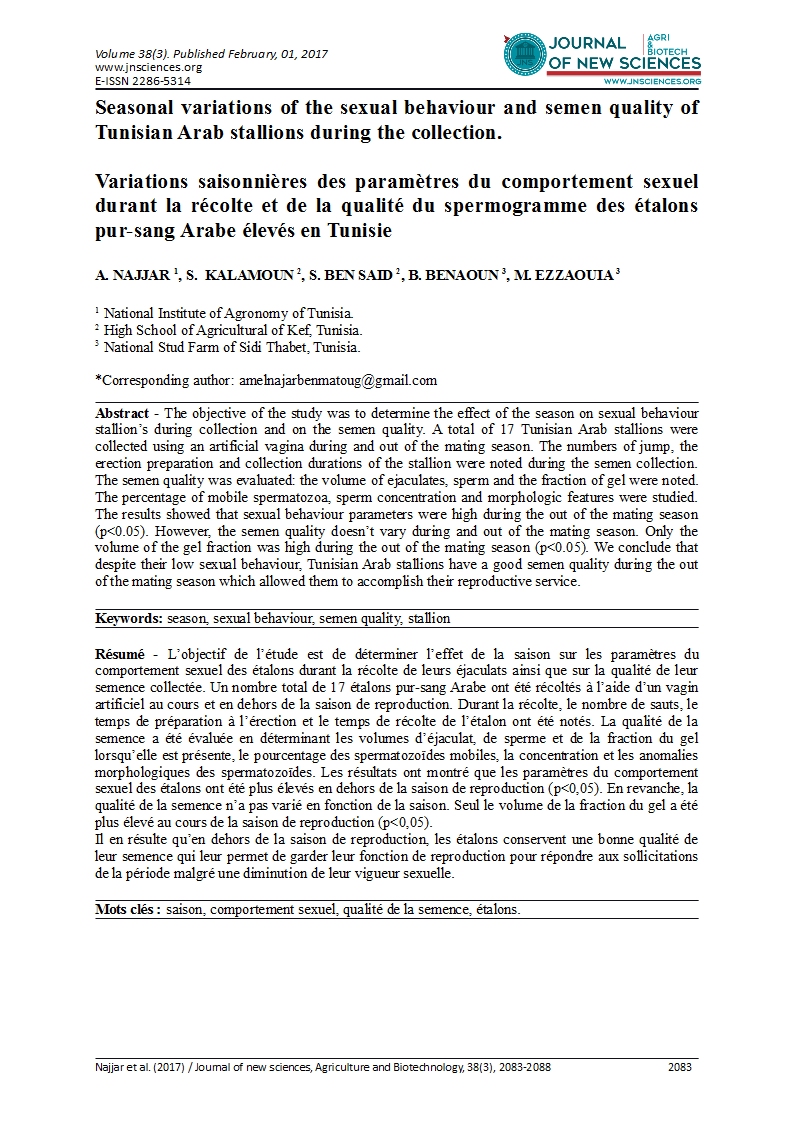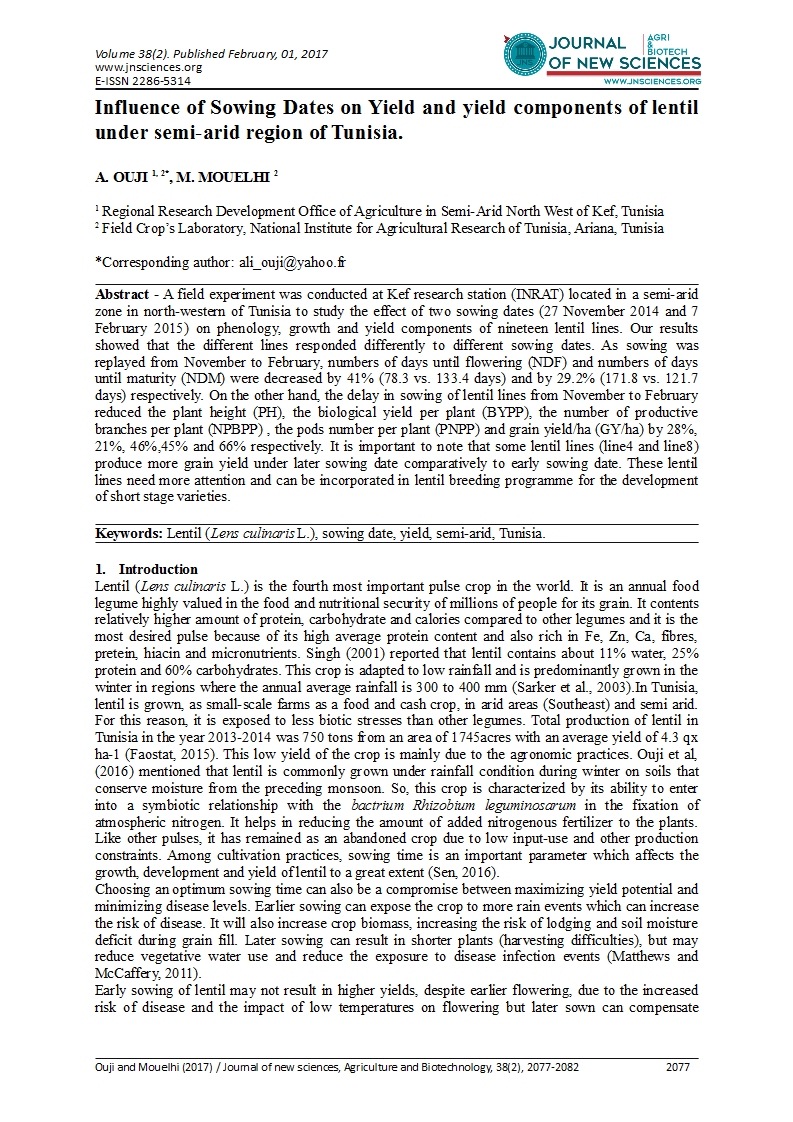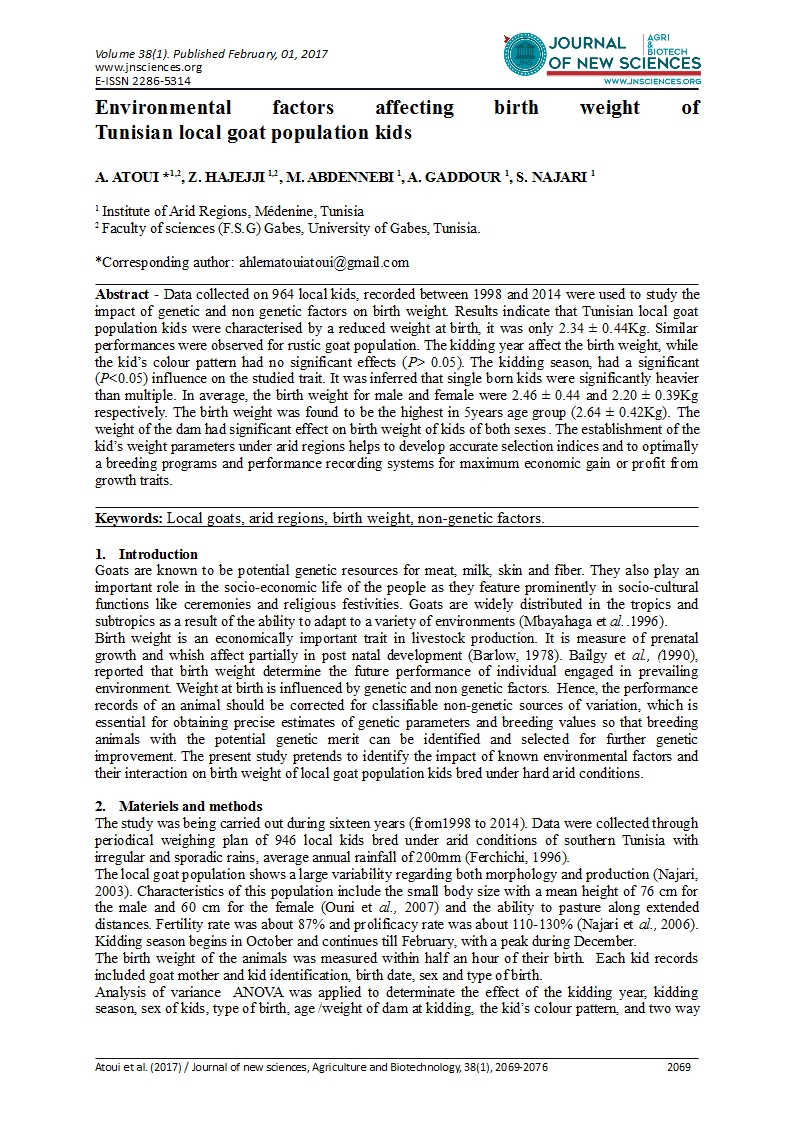- Category: Volume 38
- Hits: 5479
Seasonal variations of the sexual behaviour and semen quality of Tunisian Arab stallions during the collection

Variations saisonnières des paramètres du comportement sexuel durant la récolte et de la qualité du spermogramme des étalons pur-sang Arabe élevés en Tunisie
A. Najjar 1
S. Kalamoun 2
S. Ben Said 2
B. Benaoun 3
M. Ezzaouia 3
1 National Institute of Agronomy of Tunisia.
2 High School of Agricultural of Kef, Tunisia.
3 National Stud Farm of Sidi Thabet, Tunisia.
Abstract - The objective of the study was to determine the effect of the season on sexual behaviour stallion’s during collection and on the semen quality. A total of 17 Tunisian Arab stallions were collected using an artificial vagina during and out of the mating season. The numbers of jump, the erection preparation and collection durations of the stallion were noted during the semen collection. The semen quality was evaluated: the volume of ejaculates, sperm and the fraction of gel were noted. The percentage of mobile spermatozoa, sperm concentration and morphologic features were studied. The results showed that sexual behaviour parameters were high during the out of the mating season (p<0.05). However, the semen quality doesn’t vary during and out of the mating season. Only the volume of the gel fraction was high during the out of the mating season (p<0.05). We conclude that despite their low sexual behaviour, Tunisian Arab stallions have a good semen quality during the out of the mating season which allowed them to accomplish their reproductive service.
Keywords: season, sexual behaviour, semen quality, stallion
Résumé - L’objectif de l’étude est de déterminer l’effet de la saison sur les paramètres du comportement sexuel des étalons durant la récolte de leurs éjaculats ainsi que sur la qualité de leur semence collectée. Un nombre total de 17 étalons pur-sang Arabe ont été récoltés à l’aide d’un vagin artificiel au cours et en dehors de la saison de reproduction. Durant la récolte, le nombre de sauts, le temps de préparation à l’érection et le temps de récolte de l’étalon ont été notés. La qualité de la semence a été évaluée en déterminant les volumes d’éjaculat, de sperme et de la fraction du gel lorsqu’elle est présente, le pourcentage des spermatozoïdes mobiles, la concentration et les anomalies morphologiques des spermatozoïdes. Les résultats ont montré que les paramètres du comportement sexuel des étalons ont été plus élevés en dehors de la saison de reproduction (p<0,05). En revanche, la qualité de la semence n’a pas varié en fonction de la saison. Seul le volume de la fraction du gel a été plus élevé au cours de la saison de reproduction (p<0,05). Il en résulte qu’en dehors de la saison de reproduction, les étalons conservent une bonne qualité de leur semence qui leur permet de garder leur fonction de reproduction pour répondre aux sollicitations de la période malgré une diminution de leur vigueur sexuelle.
Mots clés : saison, comportement sexuel, qualité de la semence, étalons.


